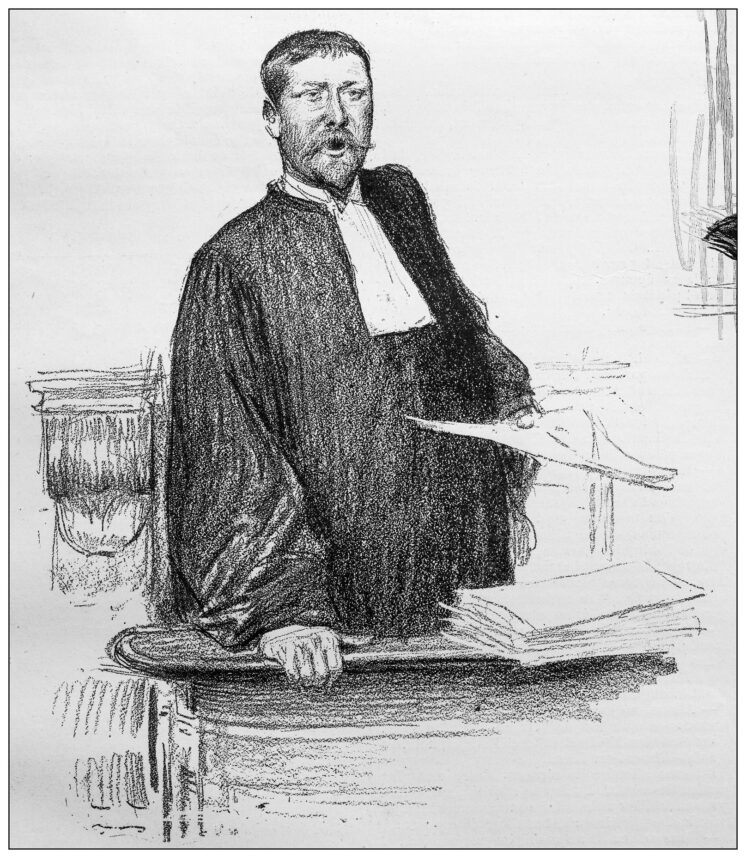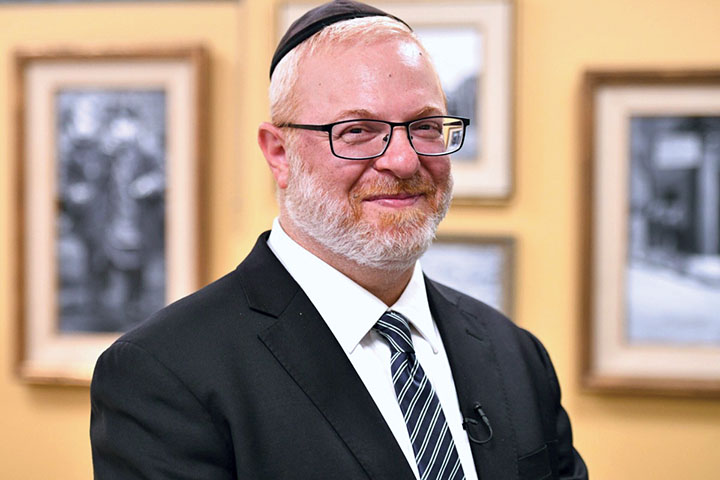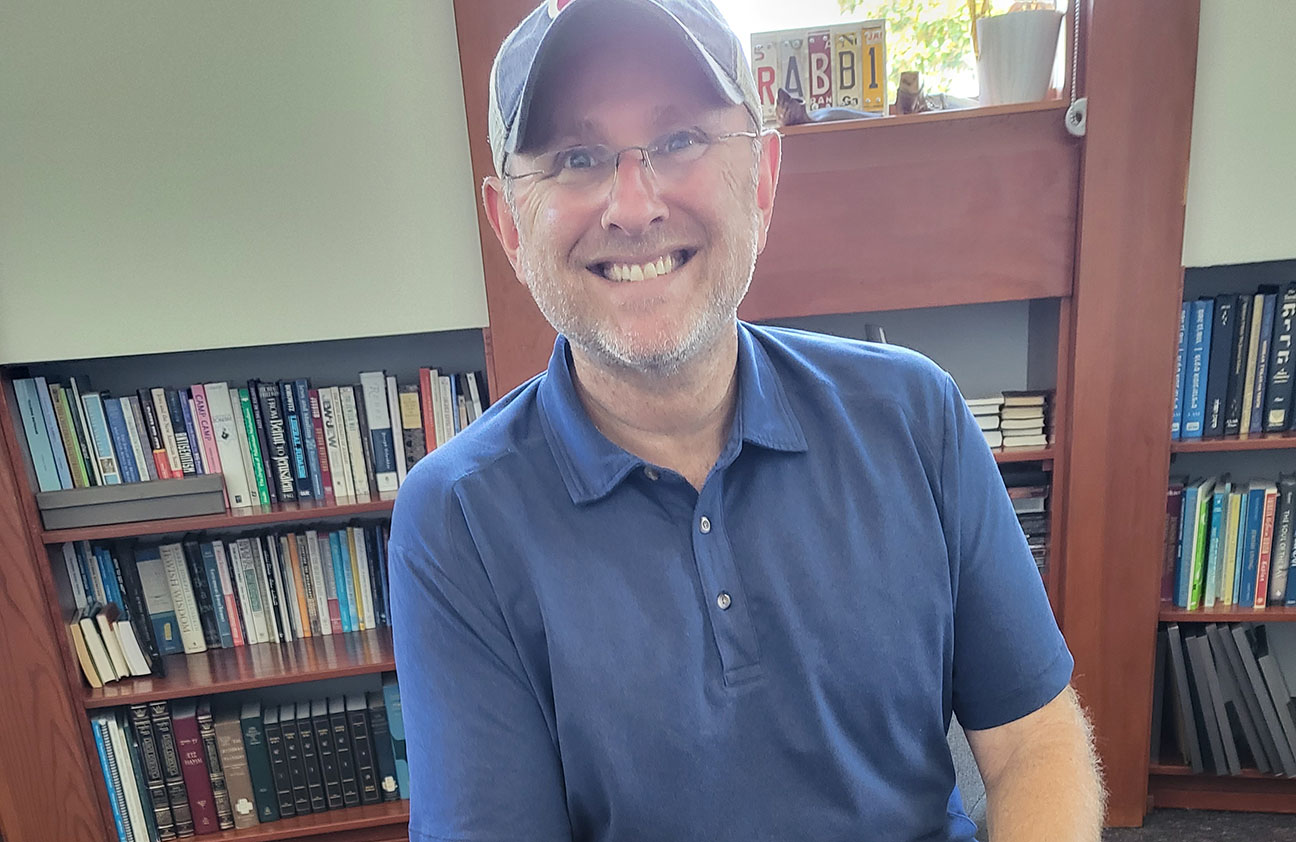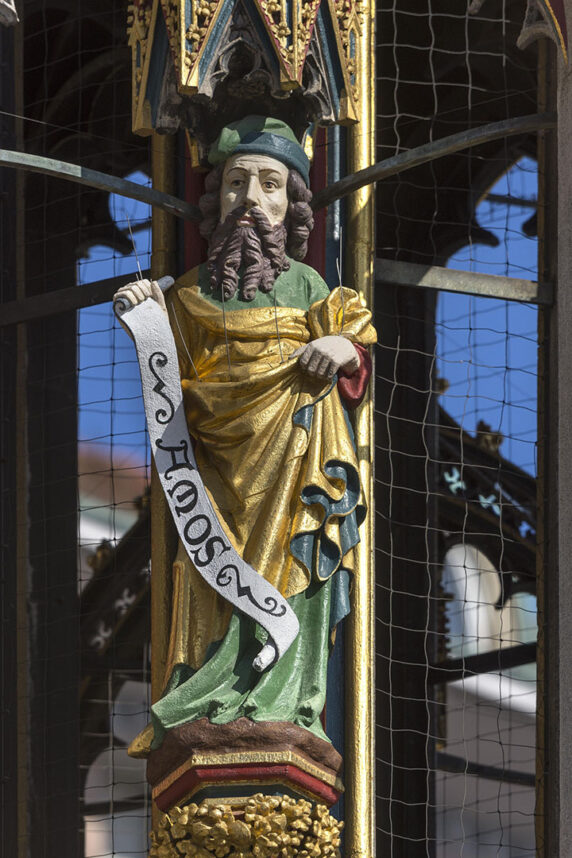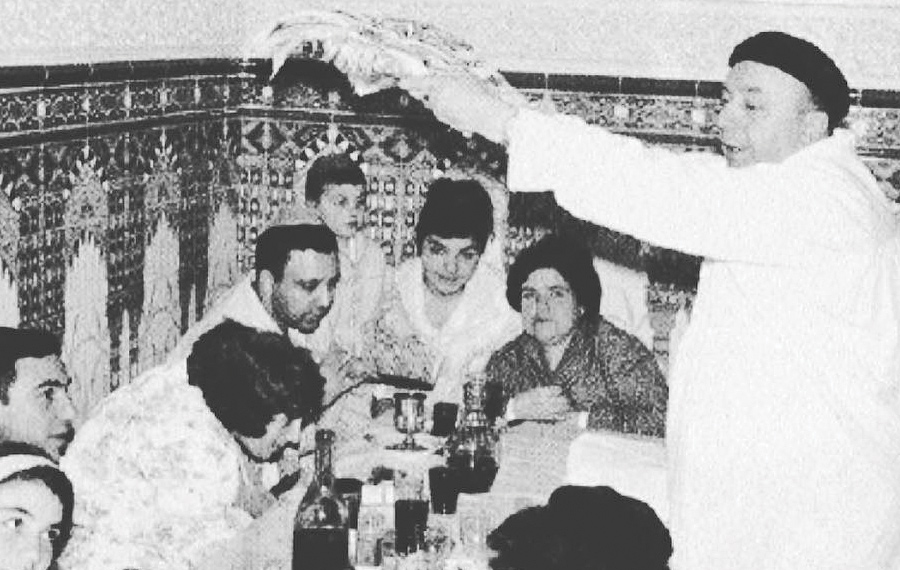
When Rabbi Daniel Bouskila was a child, his teacher asked him to share something from his family’s seder. Bouskila sang “Chad Gadya,” in Judeo-Arabic, the way his Moroccan family did at home.
His teacher was shocked.
“ ‘Jews speak Arabic?’ ” Bouskila recalled his instructor saying.
Bouskila told this story as part of a talk he gave about Sephardic Passover customs on April 13 at Westwood Village Synagogue.
The Journal spoke with several community members about growing up with or incorporating Sephardic rituals and customs in their seders.
Traditions
Sephardic Jews, originating in Spain before relocating to regions including North Africa, the Mediterranean and Southern Europe, have diverse Passover traditions. Among them are whipping one another with scallions to recall how the Egyptian taskmasters beat the Hebrew slaves.
Lesser known practices include Bibhilu, a Moroccan ritual in which the seder leader holds the seder plate over the heads of others while reciting, “In haste, we went out of Egypt with our bread of affliction and now we are free.”
Bibhilu is connected to the kabbalah’s 10 sefirot or divine attributes, Bouskila said, explaining how kabbalists say the three pieces of matzo on the plate represent “crown,” “wisdom” and discernment”’ the bone is “kindness”; the egg is “strength”; maror is “splendor”; Charoset is “eternity”; karpas is “glory”; hazeret, a bitter green, is “foundation”; and the seder plate is “kingship.”
“The presence of God is on the seder plate,” Bouskila said. “It’s like you’re blessing them one by one.”
Another Sephardic ritual is the practice around the Ten Plagues. Instead of dipping a finger or utensil into the wine cup for each of the Ten Plagues then placing a droplet of the wine on the plate, as is Ashkenazic custom, the leader of the Sephardic seder pours wine into a bowl for each plague while another person pours water into the bowl, adding more wine and water for each additional plague.
One theory behind this practice is that the mixture of water and wine re-creates what happened when the Nile River turned red with blood from the first plague, Bouskila said.
Marcia Weingarten, a longtime member of Sephardic Temple Tifereth Israel, expanded on this ritual in an email to the Journal, noting that after the plagues are recited and the water and wine have been poured into the bowl, the women solemnly leave the house, carrying the bowl, then pour the contents onto the ground.
“Then, in a very kabbalistic way, the plagues turn into blessings,” Weingarten said. “Each woman touches her hand to the ground that has now been covered with the liquid and says a blessing with her wishes for her family for the year to come.”
“Wherever we live and whatever community or background we’re from, we’re all telling the same story, in the same order, in the same steps, with slight variations and traditions.”
— Marcia Weingarten
Food
Ashkenazic charoset usually is made with chopped apples mixed with wine and walnuts, while Sephardic charoset usually includes dates, walnuts, wine and vinegar.
Ashkenazic Rabbi Bradley Shavit Artson, dean of the Ziegler School of Rabbinic Studies at American Jewish University, said he became hooked on Sephardic charoset when he was in college. His medieval literature professor gave him a 14th-century recipe with dates, figs, orange rind, pine nuts, brandy and honey.
“It is amazing,” Artson said in a phone interview. “And it looks like mortar used for bricks. And so [my family] makes a big batch of that stuff and we shape it like a pyramid and put little plastic Moseses and Pharaohs around the bottom. We don’t even make the Ashkenazi charoset anymore.”
Weingarten, whose mother was one of the founding members of Sephardic Temple, is the author of the Ladino cooking and lifestyle blog “Bendichas Manos” (“Blessed Hands”). Explaining the differences between Ashkenazic and Sephardic seders, she said Sephardic Jews use celery instead of parsley for the karpas, and romaine lettuce instead of horseradish for the maror. Most Sephardim dip the karpas in vinegar rather than salt water, and they eat lamb, whereas Ashkenazic Jews merely have a shank bone on the seder plate.
Some of these differences in cuisine are geographical, Artson said. Ashkenazic Jews eat spicy horseradish as the maror to remember the bitterness of slavery because horseradish root was available. The bitter-tasting romaine lettuce that is part of the Sephardic seder was not available in Europe at that time of year,
he said.
“Ashkenazim like to use horseradish because their grandparents and their bubbes and zaydes used horseradish,” he said. “That’s because they came from Poland, where they didn’t have lettuce.”
Kitniyot
During Passover, Most Sephardim are permitted to eat kitniyot, which includes grains and seeds, rice, corn and peas.
“Thank God for not making me Ashkenazic on Pesach,” Bouskila joked. In
his home, American-Jewish influences found their way into his family’s Moroccan seders because Bouskila’s parents were as committed to being American as they were to being Moroccan, he said. So on Pesach, they eat Moroccan salads along with matzo ball soup made from Manischewitz matzo meal.
The Haggadah
Weingarten, whose grandparents were from the Greek island of Rhodes, incorporates English and Hebrew as well as the Judeo-Spanish language, Ladino, into her seder.
“Even though it is not a language we use often, the third and fourth generation are learning different passages and songs [including “Chad Gadya” and “Echad Mi Yodea”] in that language,” Weingarten said of Ladino. “It is something uniquely special to our families. It is nice to see the next generations carry those traditions on.”
At Bouskila’s home, guests sing from the haggadah rather than just read. They follow punctuation in the Sephardic hagaddah indicating where to pause in the chanting, Bouskila said.
“If you look in an Ashkenazi haggadah, the text is punctuated according to the grammar of how you would read a paragraph. Sephardic haggadot are typically punctuated to reflect a rhythmic chanting,” he said. “There is no one person who sings. Everyone sings it together.”
Universal seder
Despite the differences between Sephardic and Ashkenazic seders, they nevertheless follow the same universal framework, Weingarten said.
“Jews everywhere are doing the same thing. We all have the same experiences. That is the beauty of the Jewish world. Wherever we live and whatever community or background we’re from, we’re all telling the same story, in the same order, in the same steps, with slight variations and traditions,” she said. “And we’ve been doing it for generations.”

















